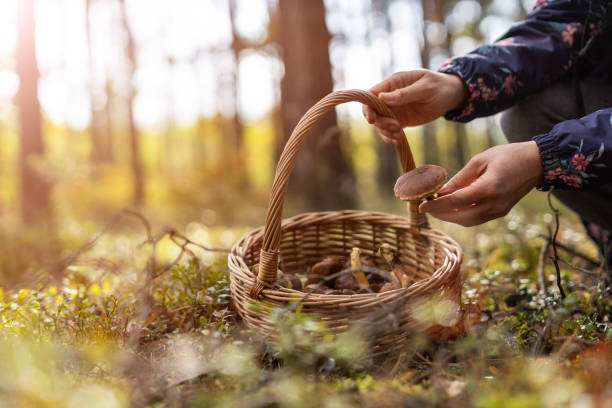Foraging in January
What to look out for on your rambles
When you look at the winter hedgerows, drooping, grey and glistening with frost, it’s hard to imagine there is much life around. But the truth is, even in the depths of winter, plenty of foodie treasures can be found.
Finding, gathering and harvesting wild foods is a wonderfully simple (and free) activity, and was once, of course, the only way to get food. While we might have a convenience store on every corner and can have groceries delivered with a click of the mouse, we still believe it’s important to get back to nature and remember where our food comes from every now and again, connecting us to the land and the seasons.
Conifer needles
An unlikely wild food with incredible medicinal properties which we see almost every day. Snip them up into small pieces and make pine needle tea for a healthy dose of immune- strengthening vitamin C.
Juniper berries
An evergreen conifer with small fleshy, purple, aromatic, berry-like cones close to the stem. You can infuse them into vodka to make homemade gin.
Tree sap
Birch sap is commonly known for its detoxifying, diuretic, cleansing and purifying properties, and can be drunk fresh, straight out of the tree. You can also make it into wine, beer, mead or vinegar.
Blackberries
Probably the most widely foraged wild fruit. You might be lucky to still find a few in the hedgerows in winter. Gather them for pies, crumbles and liqueur
Hairy bittercress
Sometimes referred to as “garden cress,” “pepper cress,” or “popweed,” this weed isn’t fussy where it grows and can be identified by a kidney bean shaped leaf with small white hairs. The soft, tender leaves have a sharp, peppery flavour, great for adding to winter salads with goat’s cheese and beetroot.
Chestnuts
A classic wintry roasted treat. Look out for their spiny casings on the woodland floor. Sweet chestnut isn’t native, but has been here since the Romans introduced it.
Pine nuts
Open pine cones can be shaken to dislodge the pine nuts from inside. Pine cones that are closed can be placed near a fire for a few days. They can be eaten raw but are usually roasted or toasted.
In the Rugby and Lutterworth area there are lots of great places to walk and take in the rural spots of Warwickshire and South Leicestershire, however if you are going foraging anywhere, always get the land-owners permission if possible and be sure of what you’re collecting.
